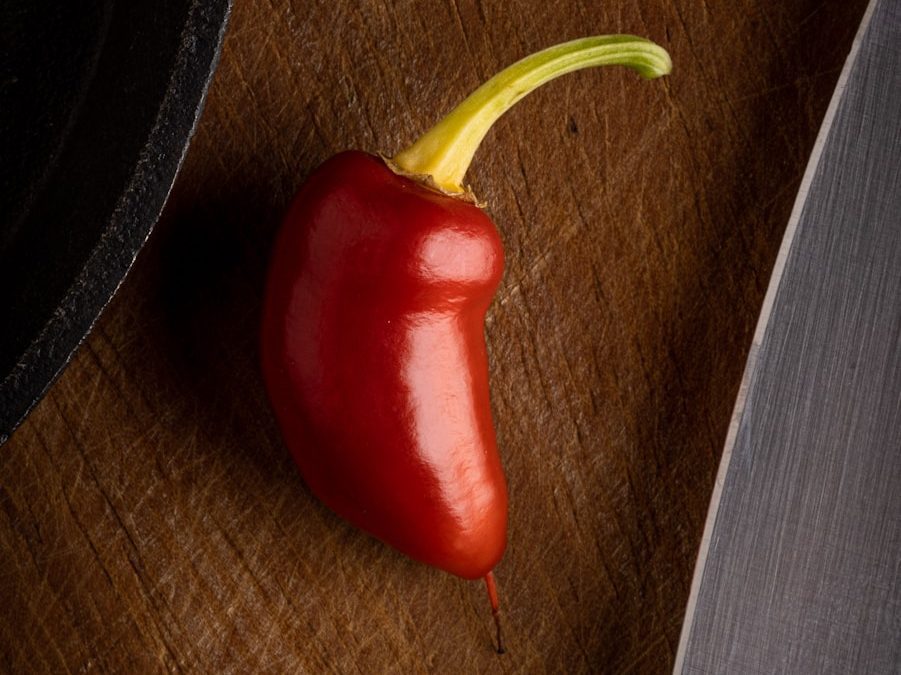Contents
- 1 Indoor Chili Peppers: Spice Up Your Cooking with Homegrown Heat
- 1.1 Why Grow Indoor Chili Peppers?
- 1.2 Best Indoor Chili Pepper Varieties
- 1.3 Essential Care Tips for Indoor Chili Peppers
- 1.4 Common Challenges with Indoor Chili Peppers
- 1.5 Harvesting Indoor Chili Peppers
- 1.6 Decorating with Indoor Chili Pepper Plants
- 1.7 Frequently Asked Questions
- 1.8 Recommended Product
- 1.9 Outbound Resource
- 1.10 Final Thoughts
Indoor Chili Peppers: Spice Up Your Cooking with Homegrown Heat
Do you love adding a spicy kick to your meals? Imagine picking your own fresh, fiery peppers without stepping outside. Growing indoor chili peppers is a fun, rewarding way to enjoy year-round harvests and bring vibrant color and flavor to your kitchen. Whether you’re a beginner or an experienced gardener, you can successfully grow indoor chili peppers with the right setup and care.
Why Grow Indoor Chili Peppers?
Fresh supply: Always have homegrown, organic chili peppers ready for your favorite dishes.
Year-round harvest: Indoor chili peppers can produce fruit throughout the year.
Decorative value: These plants add bright colors and lush green leaves to your indoor decor.
Compact size: Perfect for small apartments, kitchen windowsills, or indoor plant shelves.
Health benefits: Chili peppers are rich in vitamins and antioxidants and can boost your metabolism.
Best Indoor Chili Pepper Varieties
Thai Peppers
Thai peppers are compact, high-yielding, and perfect for pots. Their small but extremely spicy fruits are great for stir-fries and spicy sauces.
Jalapeños
A favorite in many kitchens, jalapeños are moderately spicy and perfect for salsas, pickling, and stuffing. They adapt well to indoor containers.
Cayenne Peppers
Cayenne peppers produce long, slender, and very hot fruits. Ideal for drying or using fresh in hot sauces.
Ornamental Peppers
These peppers are both decorative and edible. They produce colorful fruits in shades of red, orange, yellow, and purple. While very spicy, they brighten up any indoor space.
Habanero Peppers
For true heat lovers, habaneros offer intense spice and a fruity flavor. They thrive indoors with plenty of light and warmth.
Essential Care Tips for Indoor Chili Peppers
Light: Indoor chili peppers need at least 6-8 hours of direct sunlight or a strong grow light to thrive and produce fruits.
Soil: Use a well-draining, nutrient-rich potting mix. Adding compost or organic matter supports strong growth.
Watering: Keep the soil consistently moist but not waterlogged. Let the top inch dry slightly before watering again.
Temperature: Chili peppers love warmth. Keep indoor temperatures between 18-26°C and avoid cold drafts.
Humidity: Moderate humidity supports healthy growth. Mist occasionally if your indoor air is very dry.
Fertilizing: Use a balanced liquid fertilizer every 2-3 weeks during the growing season to encourage flowering and fruiting.
Pollination: Gently shake the plant or use a soft brush to move pollen between flowers since there may be no wind indoors.
Common Challenges with Indoor Chili Peppers
Leaf drop: Usually caused by inconsistent watering, sudden temperature changes, or insufficient light.
Pests: Watch for aphids, spider mites, and whiteflies. Regularly inspect leaves and use insecticidal soap or neem oil if needed.
Low fruit set: Often due to poor pollination or lack of sufficient light.
Harvesting Indoor Chili Peppers
Harvest when peppers reach their full size and color for the best flavor and heat.
Regular picking encourages new flowers and continuous fruit production.
Use gloves when harvesting hot peppers to avoid skin irritation.
Decorating with Indoor Chili Pepper Plants
Place on a bright kitchen windowsill for easy access while cooking.
Use colorful pots to highlight the vibrant fruits.
Group different pepper varieties together to create a bold, edible centerpiece.
Combine with herbs like basil and parsley for a functional and attractive indoor edible garden.
Frequently Asked Questions
Can I grow chili peppers indoors all year? Yes! With proper light and warmth, indoor chili peppers can fruit throughout the year.
How tall do indoor chili pepper plants get? Most varieties remain compact, ranging from 30 to 60 cm tall.
Do I need to prune indoor chili peppers? Pruning helps create a bushier shape and supports better fruiting.
Are indoor chili peppers safe for pets? While the fruits themselves are not toxic, they can irritate pets’ mouths. Keep out of reach if your pets are curious nibblers.
Recommended Product
Outbound Resource
Learn more in this guide to growing chillies.
Final Thoughts
Growing indoor chili peppers is an exciting way to spice up your cooking and brighten your indoor space. These compact, colorful plants not only deliver fiery flavor but also add natural beauty to your home. With the right care, you’ll enjoy a steady supply of homegrown heat all year.
Start your indoor chili pepper adventure today and take your culinary creations to the next level with fresh, vibrant peppers grown right inside your home!

